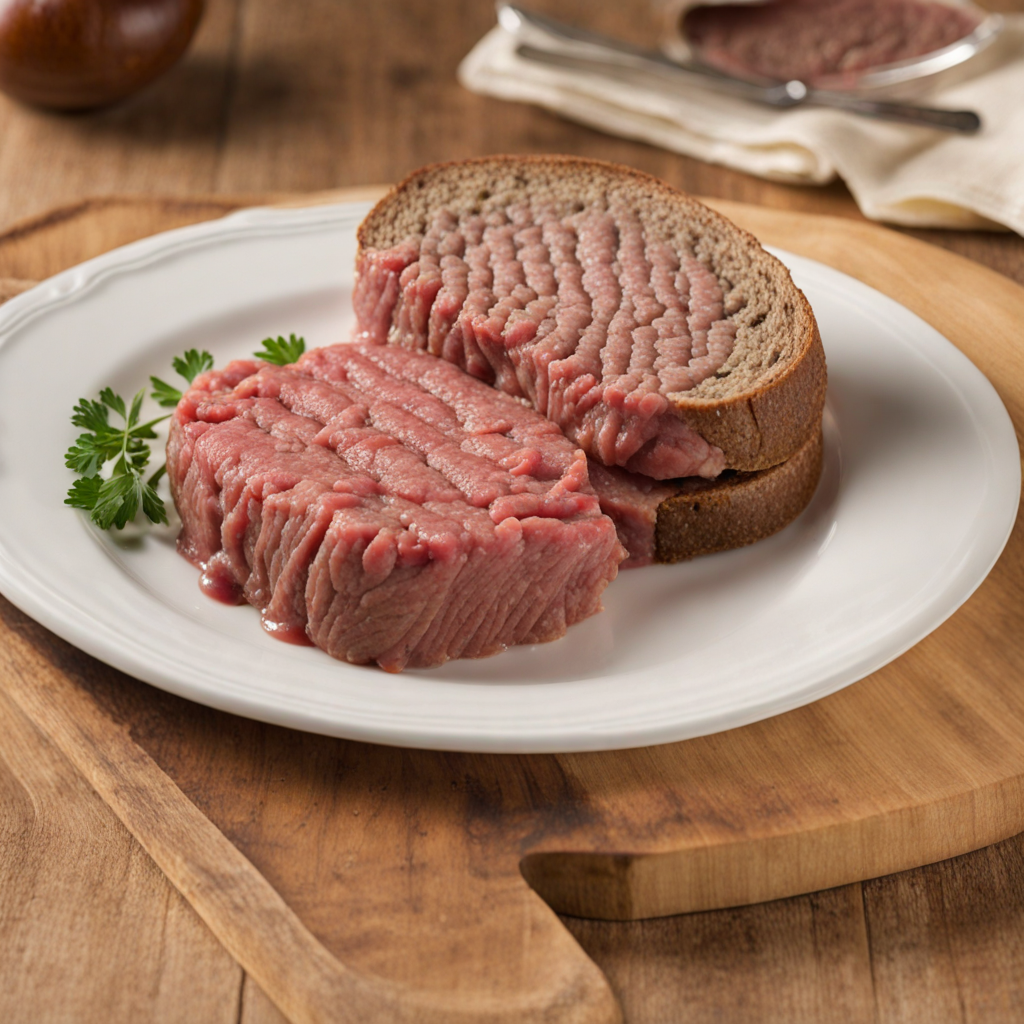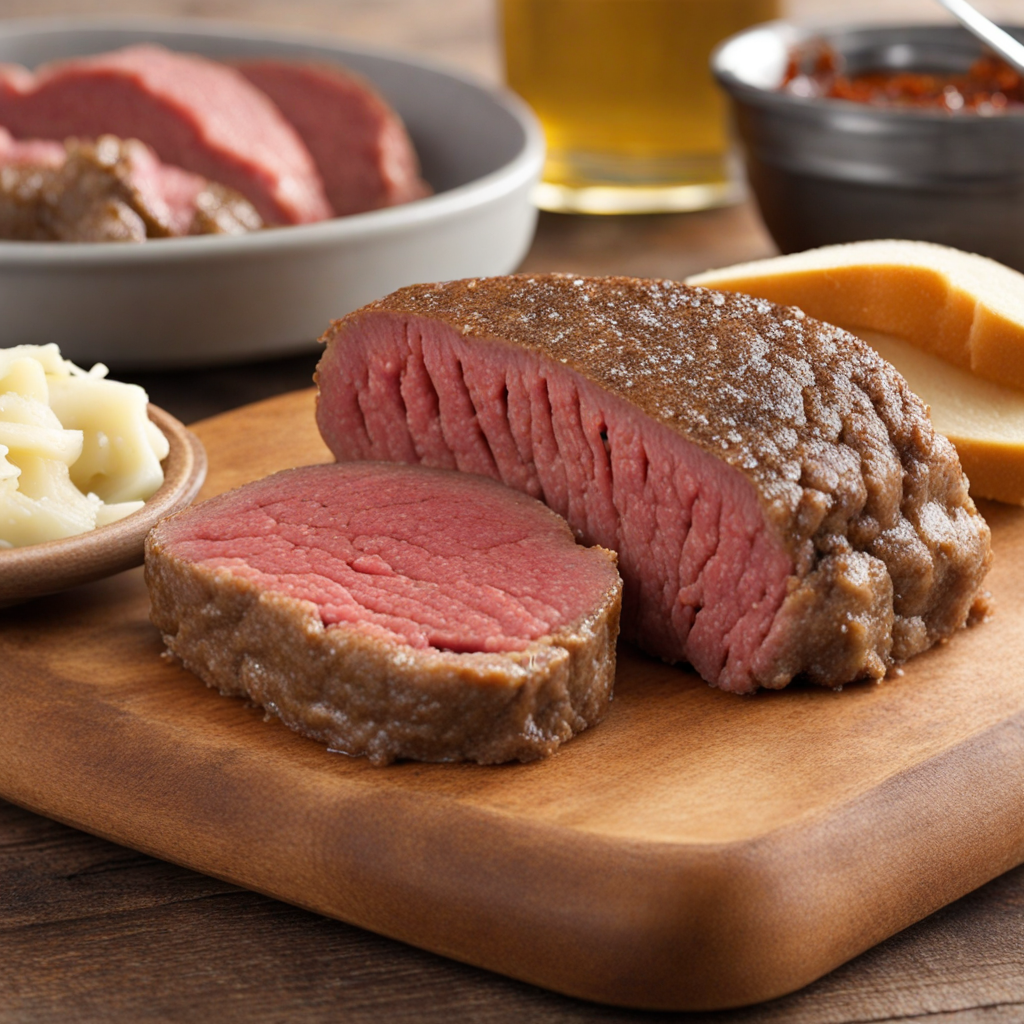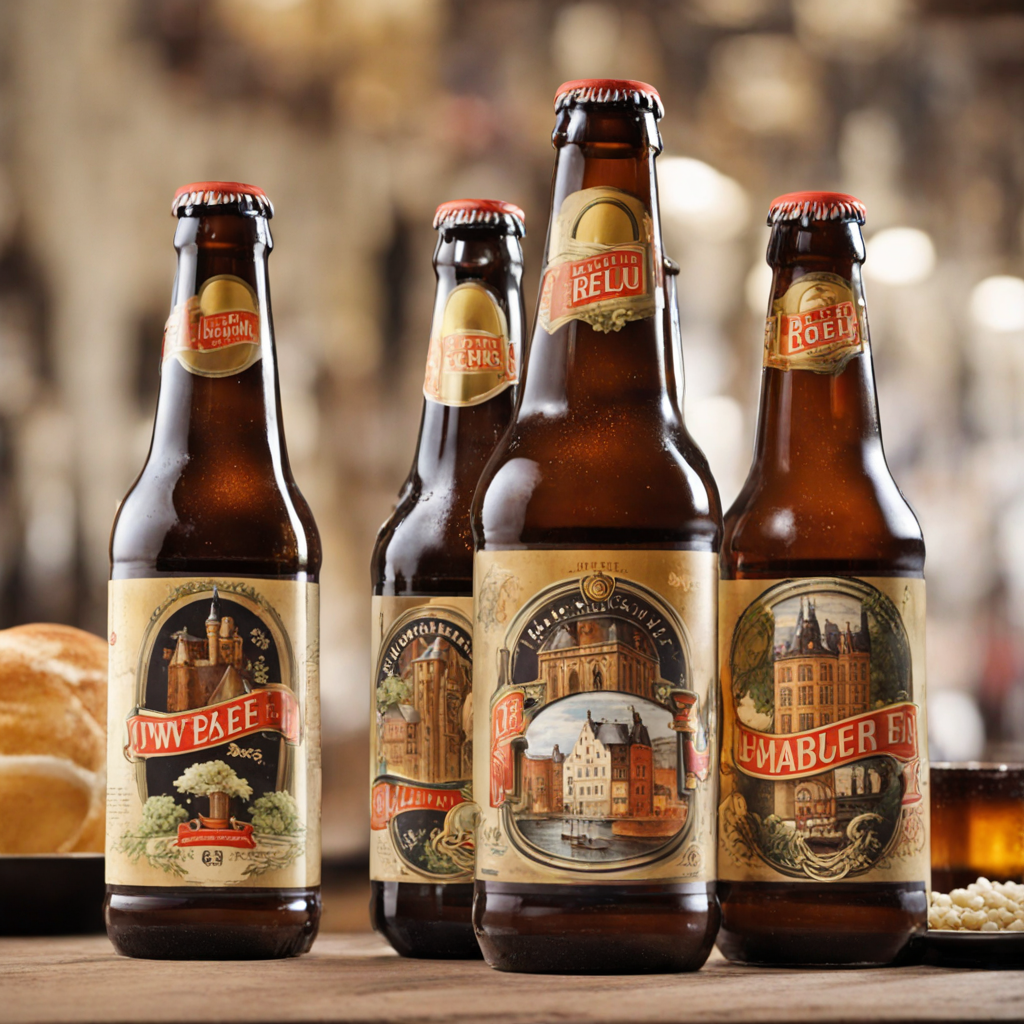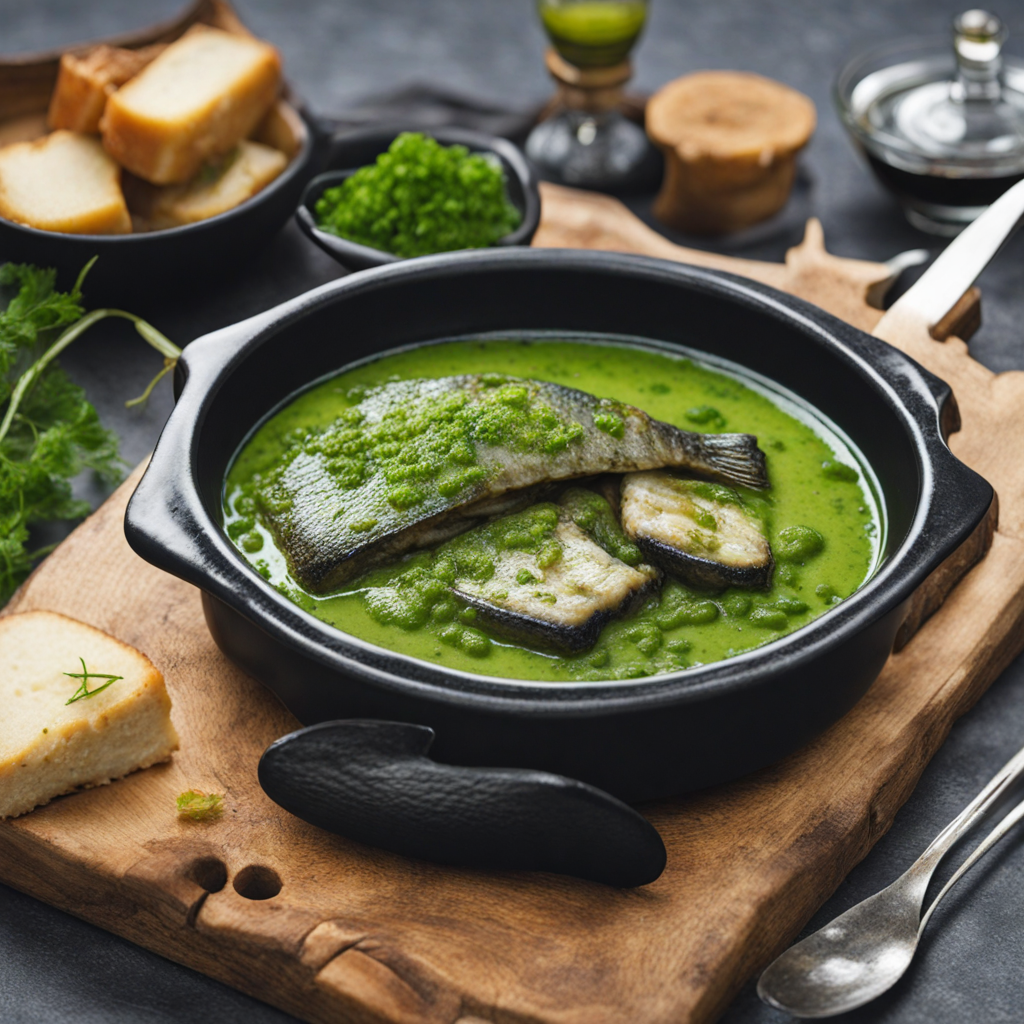Filet américain
Filet américain is a unique and beloved delicacy from Belgium, often enjoyed as a standout dish in bistros and café settings. This dish features raw minced beef, typically seasoned with a blend of spices and condiments that elevate its rich flavor profile. The beef used is of the highest quality, ensuring a tender and melt-in-your-mouth experience. It is commonly served with a variety of toppings, including finely chopped onions, capers, and various sauces that add both texture and depth to each bite. This combination creates a delightful contrast between the savory meat and the zesty accompaniments, making it an intriguing option for adventurous eaters. One of the most exciting aspects of filet américain is its versatility. Diners can customize their dish according to personal preferences, choosing from a range of toppings and condiments such as mustard, Worcestershire sauce, or even a hint of hot sauce for those who enjoy a spicy kick. It is typically accompanied by crispy fries, which serve as a perfect complement to the rich and creamy texture of the meat. This pairing not only satisfies hunger but also provides a balance between the raw dish and the hearty side, making for a well-rounded meal. Filet américain is often enjoyed as an appetizer or a light meal, and it is commonly paired with a refreshing Belgian beer. The combination of flavors is both bold and comforting, inviting those who are open to trying something new to dive into the world of raw culinary delights. As you savor each bite, it becomes clear why filet américain holds a special place in the hearts of many Belgians, representing a rich tradition of quality ingredients and simple yet profound flavor harmony.
How It Became This Dish
The History of Filet Américain: A Belgian Culinary Gem Filet Américain, a Belgian dish that tantalizes the taste buds, is often misunderstood and overlooked in the broader context of European cuisine. This uncooked, seasoned ground beef delicacy, similar to steak tartare, has a rich history intertwined with Belgian culture, culinary innovation, and regional pride. Its journey through time reflects the evolution of Belgian gastronomy and the nation’s love for hearty, flavorful foods. Origins: A Culinary Creation The origins of filet américain are somewhat murky, with several theories regarding its inception. It is widely believed that the dish emerged in the late 19th to early 20th century, a time when culinary influences were rapidly changing due to globalization. The rise of beef consumption, alongside an increase in butchery techniques, paved the way for the popularity of raw meat dishes. One hypothesis suggests that filet américain was inspired by the American-style steak tartare, which gained notoriety in Europe after World War I. American soldiers introduced various culinary practices and food items that left a mark on European cuisine. The unique preparation of finely minced or ground beef, seasoned with a blend of spices, oil, and sometimes additional ingredients, was embraced by the Belgian populace, leading to the birth of filet américain. Cultural Significance Filet américain quickly became more than just a dish; it evolved into a cultural symbol of Belgian culinary identity. Its preparation and presentation often reflect the communal aspect of Belgian dining. Traditionally served on a slice of bread or as part of a sandwich, it is frequently accompanied by fries, a staple in Belgian cuisine. The dish is commonly found in bistros, brasseries, and cafés throughout Belgium, showcasing its deep-rooted connection to everyday life. In Belgium, filet américain is not merely a meal; it is a social experience. Belgians often gather around tables to share stories and laughter while enjoying this dish. It is a common offering at family gatherings, picnics, and celebrations. The choice to prepare filet américain at home or order it at a local eatery underscores its versatility and widespread appeal. Moreover, filet américain has adapted to fit modern culinary trends. Chefs have begun to experiment with various flavors and presentations, incorporating elements from global cuisines. Some variations include the addition of fresh herbs, spices, or even gourmet toppings like truffles or foie gras. This adaptability illustrates how filet américain has maintained its relevance in a rapidly evolving culinary landscape. Development Over Time As Belgium underwent significant social and economic changes in the 20th century, so too did its culinary practices. The post-World War II era saw a surge in the popularity of dining out, and filet américain became a staple on the menus of many establishments. The dish was often marketed as a luxurious yet affordable option for the burgeoning middle class, allowing diners to indulge in a premium meat dish without breaking the bank. In the 1960s and 1970s, Belgium experienced a culinary renaissance, with chefs emphasizing local ingredients and traditional recipes. Filet américain benefited from this renewed focus on authenticity and quality. Butchers began to take pride in their craft, offering finely minced beef sourced from local farms. The rise of artisanal butchery led to improved standards for meat preparation, ensuring the safety and quality of raw meat dishes. During this time, filet américain also began to attract attention beyond Belgium's borders. It started appearing in neighboring countries, especially France and the Netherlands, where it was often referred to as "tartare américain." The dish's popularity among tourists further solidified its status as a Belgian culinary icon. In the late 20th century, concerns regarding food safety and health began to shape the perception of raw meat dishes globally. The risk of foodborne illness associated with consuming raw beef prompted discussions around preparation methods and sourcing standards. In response, many Belgian restaurants and butchers adopted strict hygiene practices, ensuring that filet américain was prepared safely and consistently. This commitment to quality helped retain consumer confidence in the dish. Modern Era: A Resilient Classic Today, filet américain is more than just a dish; it is a beloved part of Belgium's culinary heritage. The dish continues to be celebrated in various forms, with each region of Belgium offering its own unique twist. For instance, some versions may include ingredients like capers, onions, or mustard, while others may be served with a more elaborate array of accompaniments. The rise of food culture and social media has also played a significant role in the resurgence of interest in traditional dishes like filet américain. Food bloggers and influencers have showcased the dish in creative ways, introducing it to a new generation of food enthusiasts. The vibrant visuals and engaging stories surrounding the dish have contributed to its recognition beyond Belgian borders. Moreover, the emphasis on local and sustainable sourcing has led to a revival of artisanal butchers who prioritize quality over quantity. Consumers today are more conscious of the origins of their food, and many seek out establishments that offer ethically sourced products. This trend has allowed filet américain to maintain its status as a premium dish while adhering to modern culinary values. Conclusion: A Culinary Legacy The history of filet américain is a testament to Belgium's rich culinary tapestry. As the dish has evolved over time, it has not only retained its status as a beloved classic but has also adapted to contemporary tastes and standards. Today, filet américain stands as a symbol of Belgian culture, embodying the nation's love for hearty, flavorful food that brings people together. Whether enjoyed at a local café, prepared at home, or presented in a Michelin-starred restaurant, filet américain remains a cherished element of Belgian cuisine. Its journey from humble beginnings to a celebrated culinary icon serves as a reminder of the importance of tradition, community, and innovation in the world of gastronomy. As long as there are Belgians gathering around tables, sharing stories and laughter, filet américain will continue to be at the heart of their culinary experience.
You may like
Discover local flavors from Belgium







